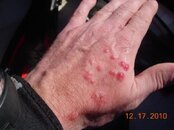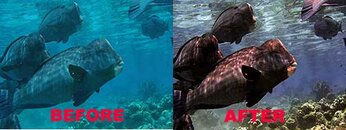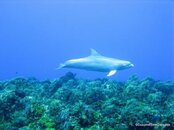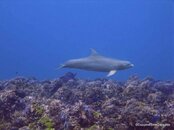Got this stuff free about 2 years ago, figured it was junk, but must have thrown it in my divebag. This summer, 2nd dive, BAM, me on the hands, Gabi on the lip and my son on the arm... I figured what the heck, and made us all try it (This is an EXPERIMENT boys! Shut up and put it on. No..we're NOT going to pee on it as a control. Sigh. Sometimes I hate being the only girl on the boat).
The bottle says it's for Jellyfish, but it seemed to do the job. It didn't take a 100% of the sting out, but it gave significant relief. What was really impressive was that there was virtually NO reaction the next day. I ended up with just a small, bumpy rash, that didn't itch or hurt. Really nothing. My son's arm was slightly blotchy where he was hit, no pain or itching, NO welting. Stayed that way for about a week. Gabi was fine

He kept asking for "that sheeet" all week LOL I meant to leave it with him and totally forgot

and then, oh well...
We used it all week with the same results and yes, I'm thorough. I tested it on a jellyfish, worked on that too. Better actually.
Mine is in a different bottle, but I think this is the same stuff. I've had others tell me it didn't do a thing for them. Maybe it's like wine and you need to age if for two years?
 Amazon.com: Jelly Fish After Sting Relief for Scuba Diving, Snorkeling, Swimming and all Watersports: Sports & Outdoors
Amazon.com: Jelly Fish After Sting Relief for Scuba Diving, Snorkeling, Swimming and all Watersports: Sports & Outdoors







